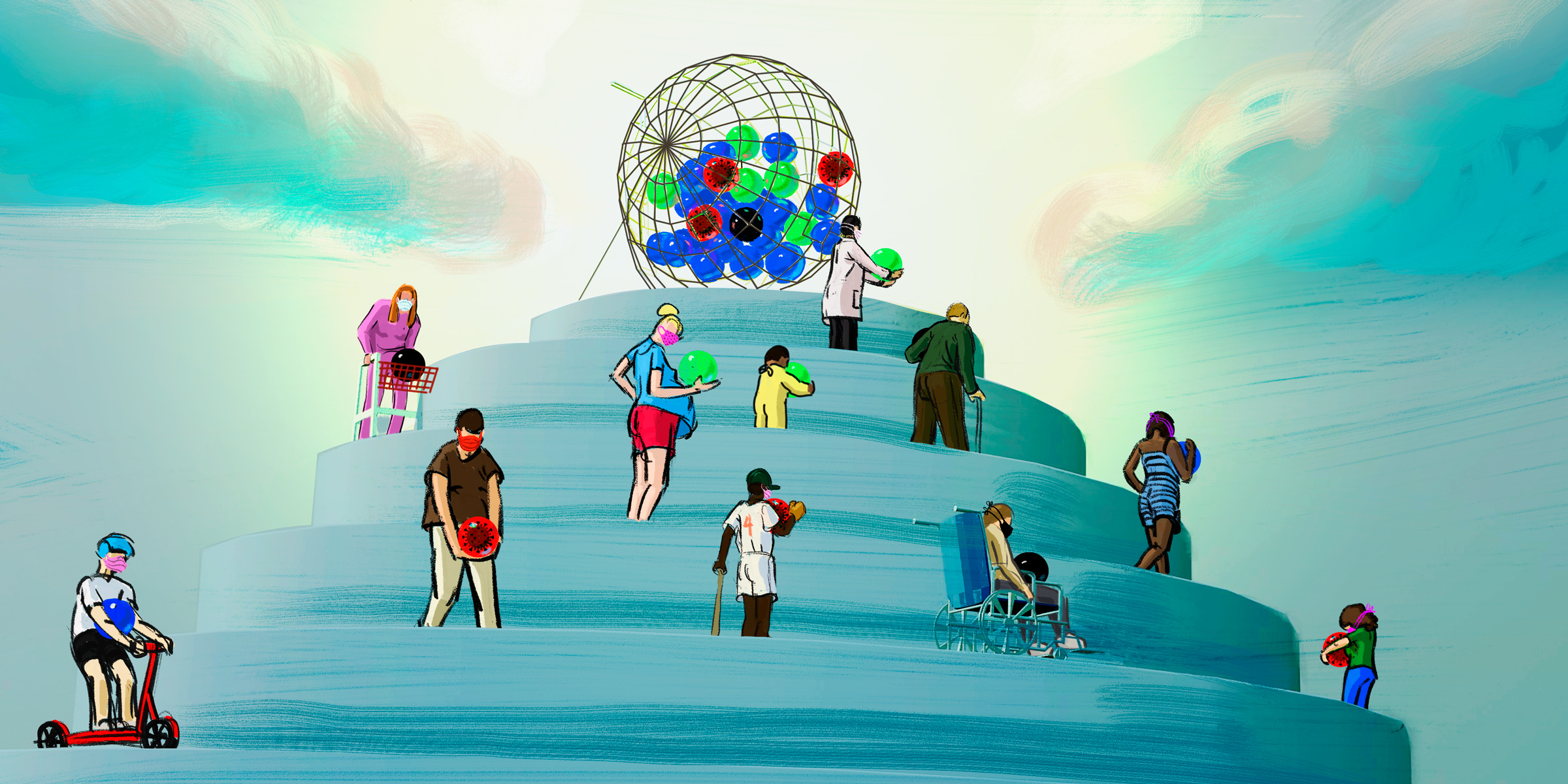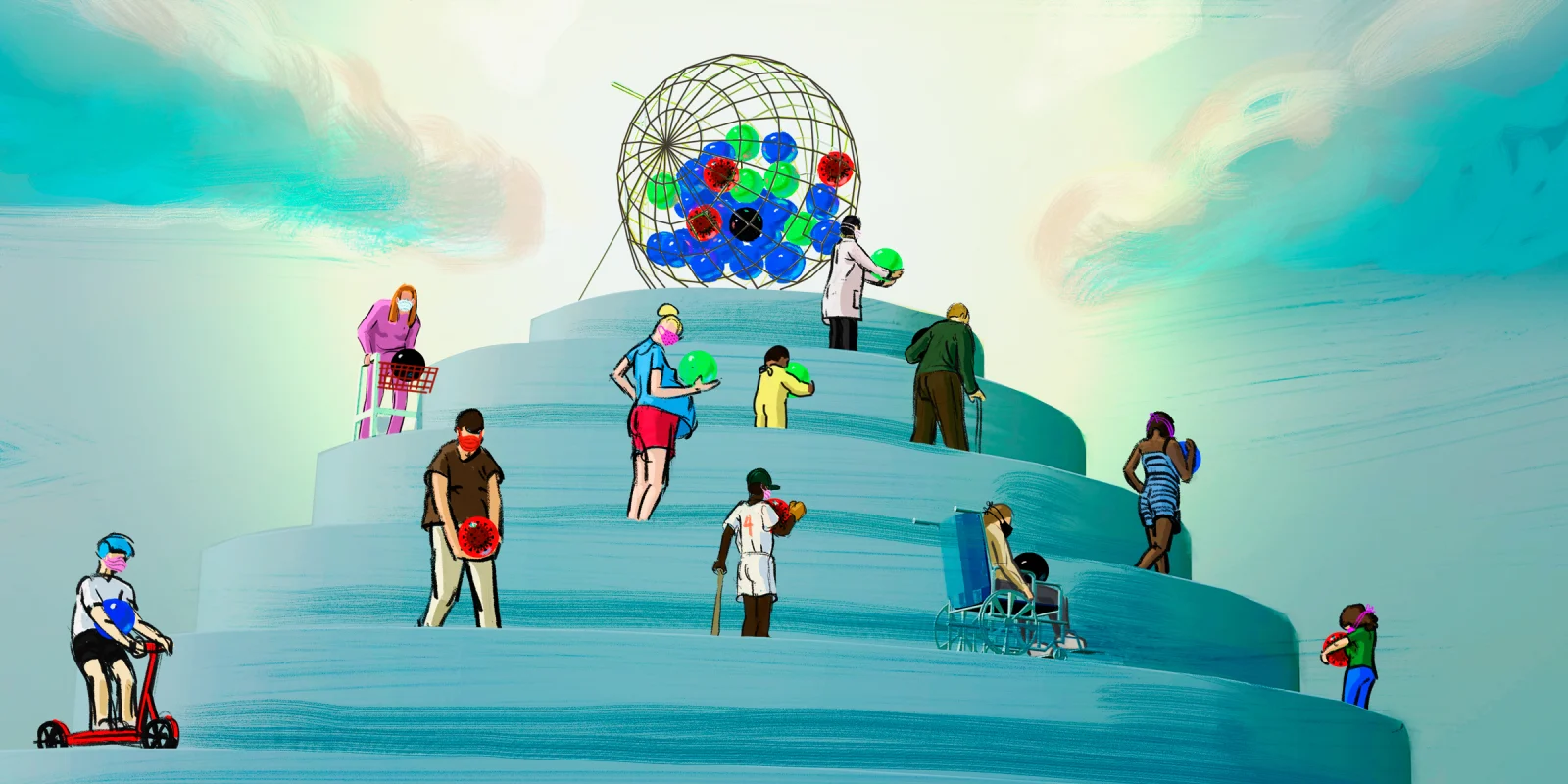 Medical oncologists often find ourselves needing to advise people who do not look or feel sick to take chemotherapy. This concept, of course, is what we call adjuvant therapy — using chemotherapy in healthy people as an adjunct to surgery to increase the cure rate from surgery alone.
Medical oncologists often find ourselves needing to advise people who do not look or feel sick to take chemotherapy. This concept, of course, is what we call adjuvant therapy — using chemotherapy in healthy people as an adjunct to surgery to increase the cure rate from surgery alone.
I’ve been thinking about the concept of adjuvant cancer therapy in relation to the COVID-19 pandemic and the divisive rhetoric over the utility of social distancing and masking. Because SARS-CoV2 is an invisible threat, it seems it is difficult for some to think that these measures should apply to them.
I think the concept of adjuvant cancer therapy could serve as a useful model. Medical oncologists spend vast amounts of our time and energy convincing our patients about the truths of an invisible illness that they’d rather not be faced with.
Patients often meet us for the first time after they’ve completed a successful cancer surgery. They understand that all visible cancer has been removed. However, they often cannot conceive of how they are still at risk of death from invisible cancer cells. Nor how up-front chemotherapy could lower that risk.
In those initial consult visits, we explain how cancer cells can spread microscopically — and how they could have already done so before the time of surgery. We introduce the concept of adjuvant therapy — a systemic treatment that is administered (either by pill, injection, or infusion) to try to eradicate those rogue cells. To decrease the chance of the cancer coming back in the future in a worse, more advanced stage (metastatic).
A typical scenario is that at some point in that consult visit, the patient will tell us that what we’re describing can’t possibly apply to them because their scans were “clear.” That’s when we explain that microscopic cells are invisible to scans.
Next, patients often ask why we don’t simply perform a blood test to know if the cells are there. We have to explain that while those tests are used in some research settings, they are not yet accurate enough for use in adjuvant treatment decisions.
The patients then demand to know what test will tell them whether the benefit of the adjuvant chemotherapy is worth the risk.
Here, we have to answer, it comes down to statistics. Everyone’s least favorite math class.
For many cancers, rigorous clinical trials have shown both disease-free and overall survival benefits to adjuvant therapies. But our patients first want to know, after they finish adjuvant treatment, how will they know if the chemotherapy worked — for them as an individual? What kind of tests will they have?
The answer we have to give is that the only test that can answer that question is the test of time. That is, if they live out their lives and die of something other than cancer, we will know it worked.
Which, it turns out, is a highly unsatisfying answer to most. By this point in the consultation, some patients are ready to walk out of the appointment, so I often turn to visual teaching aids.
I will show my patient a diagram of a box with 100 circles. The 100 circles represent 100 people diagnosed with the same kind of cancer, treated with surgery alone. If the cure rate with surgery is 80%, then 80 of the circles will be colored blue. The remaining 20 circles are colored red. Those are the 20 people who will still die of their cancer over the next 10 years despite an excellent surgery. (For simplification and word count constraints here, this example assumes no deaths from other non-cancer causes in the 10 years).
Then I show them a new box representing people who received adjuvant chemotherapy in addition to surgery. There are again 100 circles. Eighty circles are again colored blue (the 80% of people who are cured with surgery). But in this box, only 10 circles are red. The remaining 10 circles are colored green. The green circles represent the 10 people whose lives were saved by taking adjuvant chemotherapy. In other words, the cure rate was increased from 80% to 90%.
But here’s the catch. To save those 10 lives, we have to offer chemotherapy to all 100 people.
We acknowledge that 80 out of 100 people will be overtreated with chemotherapy, in order to save 10 lives. And 10 people will still have cancer recurrence despite taking the adjuvant chemotherapy. (And yes, for some cancers, we do have better molecular risk-stratification factors that can help us lessen the risk of over or undertreatment. But I am not going into those here because it’s not the point of the essay).
Of course, the risk varies by cancer type and stage. Sometimes, we can show a person that for their cancer, there are only five green circles in the box. Sometimes, conversely, there are 50 or more green circles in the box.
The more green circles, the more likely most people choose to take adjuvant chemotherapy. That’s human nature. In my own practice, I find the cutoff point is approximately 10%. In other words, for those who see 10 or more green circles in that box, they feel the chance of benefit for themselves is high enough to take the adjuvant chemotherapy.
But what that risk cutoff point is for each person is highly individual. Some people will choose to take chemotherapy for as little as 5% benefit. Some people will not consider it unless they see 20 green circles, or 50. Or, sometimes, no number of green circles will convince them.
With social distancing and masking, we are asking people to change their behaviors to reduce the risk of death from something that cannot be seen, the SARS-CoV2 virus.
SARS-CoV2 spreads microscopically through our communities. Social distancing and masking are the systemic methods to try to eradicate the spread of the virus — the invisible enemy.
But here’s where the metaphor of adjuvant chemotherapy breaks down. With COVID-19, it’s not necessarily about one’s individual risk of death from the disease, but the risk for others, especially the most vulnerable.
It seems that when the green circles represent other people rather than ourselves, people choose differently.
Will we, as a society, choose to accept that social distancing and masks could mean “overtreatment” if it means more lives are saved — when those lives are not our own?
The effects of our choices may remain invisible to us. No quick test can tell us if our own individual social distancing and masking are working. Only time will tell. And statistics.
For many, I fear that answer will prove too unsatisfying.
Jennifer Lycette, MD, is a medical oncologist in community practice for 14 years. She resides on the North Oregon Coast with her husband and three children. Her blog, The Hopeful Cancer Doc, started in 2017 with writings on practicing oncology, maintaining hope in medicine, work-life balance, and various other musings. Her perspective essays have been published in NEJM, JAMA, and more. She is currently hard at work revising her speculative medical thriller, a Pitch Wars 2019 selection. Dr. Lycette was a 2018-2019 Doximity Author and is a 2019-2020 Doximity Fellow. You can follow her on Twitter @JL_Lycette. Opinions are her own.Click here to see more perspectives on COVID-19 from the Doximity network.
Click here for up-to-date news about COVID-19 on Doximity.
Illustration by Jennifer Bogartz







